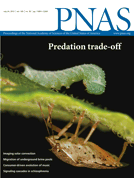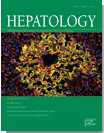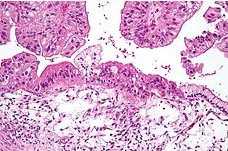PNAS:通过胞外菌网形成所释放的染色质导致癌症患者血栓
2012-07-27 Beyond 生物谷
临床上肿瘤患者经常性出现癌症相关的血栓,其发生的病理机制一直以来悬而未决。 然而,可以明确的是血栓的出现与肿瘤患者的预后较差有密切联系,血栓是导致癌症患者死亡的第二大原因。 最近一项研究表明染色质通过中性粒细胞形成的胞外菌网释放到血液中是导致凝血和血栓的主要原因。研究人员使用慢性粒细胞性白血病小鼠模型发现,恶性和非恶性嗜中性粒细胞更容易形成胞外菌网。 这种胞外菌网的形成在乳腺癌和肺癌模型中也
临床上肿瘤患者经常性出现癌症相关的血栓,其发生的病理机制一直以来悬而未决。
然而,可以明确的是血栓的出现与肿瘤患者的预后较差有密切联系,血栓是导致癌症患者死亡的第二大原因。
最近一项研究表明染色质通过中性粒细胞形成的胞外菌网释放到血液中是导致凝血和血栓的主要原因。研究人员使用慢性粒细胞性白血病小鼠模型发现,恶性和非恶性嗜中性粒细胞更容易形成胞外菌网。
这种胞外菌网的形成在乳腺癌和肺癌模型中也观察到,这表明癌症通过影响宿主系统诱发外周血中性粒细胞的增加,导致胞外菌网更容易形成。此外,在晚期乳腺癌模型中,胞外菌网的形成伴随肺静脉血栓而出现。
在血栓前期阶段给予癌症老鼠模型低剂量LPS结合G-CSF后,发现血小板数目减少了,微血栓形成也被抑制。总之研究证实通过胞外菌网的形成所释放的染色质是导致癌症患者血栓形成的主要原因之一,或许这是一个在临床上可以用来改善癌症患者血栓症状的一个潜在靶标。

doi:10.1073/pnas.1200419109
PMC:
PMID:
Cancers predispose neutrophils to release extracellular DNA traps that contribute to cancer-associated thrombosis
Demers, M., D. S. Krause, et al.
Cancer-associated thrombosis often lacks a clear etiology. However, it is linked to a poor prognosis and represents the second-leading cause of death in cancer patients. Recent studies have shown that chromatin released into blood, through the generation of neutrophil extracellular traps (NETs), is procoagulant and prothrombotic. Using a murine model of chronic myelogenous leukemia, we show that malignant and nonmalignant neutrophils are more prone to NET formation. This increased sensitivity toward NET generation is also observed in mammary and lung carcinoma models, suggesting that cancers, through a systemic effect on the host, can induce an increase in peripheral blood neutrophils, which are predisposed to NET formation. In addition, in the late stages of the breast carcinoma model, NETosis occurs concomitant with the appearance of venous thrombi in the lung. Moreover, simulation of a minor systemic infection in tumor-bearing, but not control, mice results in the release of large quantities of chromatin and a prothrombotic state. The increase in neutrophil count and their priming is mediated by granulocyte colony-stimulating factor (G-CSF), which accumulates in the blood of tumor-bearing mice. The prothrombotic state in cancer can be reproduced by treating mice with G-CSF combined with low-dose LPS and leads to thrombocytopenia and microthrombosis. Taken together, our results identify extracellular chromatin released through NET formation as a cause for cancer-associated thrombosis and unveil a target in the effort to decrease the incidence of thrombosis in cancer patients.
本网站所有内容来源注明为“梅斯医学”或“MedSci原创”的文字、图片和音视频资料,版权均属于梅斯医学所有。非经授权,任何媒体、网站或个人不得转载,授权转载时须注明来源为“梅斯医学”。其它来源的文章系转载文章,或“梅斯号”自媒体发布的文章,仅系出于传递更多信息之目的,本站仅负责审核内容合规,其内容不代表本站立场,本站不负责内容的准确性和版权。如果存在侵权、或不希望被转载的媒体或个人可与我们联系,我们将立即进行删除处理。
在此留言














#PNAS#
52
#胞外菌网#
62
#癌症患者#
77
#致癌#
56
#染色质#
63